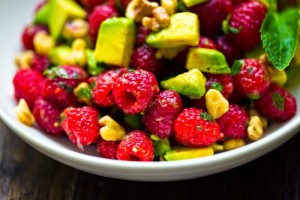
When I learned that 90% of all heart disease is preventable I decided to find ways to do just that.
Here are some ideas you can use to take charge of your heart health.

When I learned that 90% of all heart disease is preventable I decided to find ways to do just that.
Here are some ideas you can use to take charge of your heart health.
To help prevent heart disease, you can:
Why Cold Temperatures Are Tough on the Heart By Richard N. Fogoros, MD
Being in a cold environment causes our bodies to make certain physiological adjustments in order to preserve our core body temperatures. These normal adjustments can present a challenge to people with heart disease. Among other things, cold temperatures cause:
Cold Weather Precautions for People With Heart Disease
All of the above factors can lead to acute cardiac problems in somebody with heart disease. While everyone needs to take precautions when they are in a cold environment, precautions are especially important if you have a heart problem. So, follow these five tips:

Heart Attack on a bun
According to this work, published online in the journal Nature Medicine, eating red meat delivers L-carnitine to bacteria that live in the human gut. These bacteria digest L-carnitine and turn it into a compound called trimethylamine-N-oxide (TMAO). TMAO has been shown to cause atherosclerosis, in mice, the disease process that leads to cholesterol-clogged arteries. Clogged arteries can lead to heart attacks. (https://www.health.harvard.edu/blog/new-study-links-l-carnitine-in-red-meat-to-heart-disease-201304176083)
Conclusion: if you are not convinced that consuming red meat is bad for your heart, arteries and health, then think about the planet. Stop eating red meat because your mother says to, Mother Earth, that is.
 One-third of all Americans don’t get enough sleep; 50% of all deaths are caused by heart-related issues. Do you think there is a connection? You bet there is. “Researchers have found that when we don’t get enough sleep, our bodies produce higher levels of C-reactive protein, interleukin-6, tumor necrosis factor-alpha, and other inflammatory agents. Each of these is also linked with heart disease and other chronic health issues like diabetes.”[1] Inflammation is also the key factor in other autoimmune diseases such as Rheumatoid Arthritis, Crohn’s Disease, Asthma, Heart Disease, Fibromyalgia and a host of other inflammation-related conditions.
One-third of all Americans don’t get enough sleep; 50% of all deaths are caused by heart-related issues. Do you think there is a connection? You bet there is. “Researchers have found that when we don’t get enough sleep, our bodies produce higher levels of C-reactive protein, interleukin-6, tumor necrosis factor-alpha, and other inflammatory agents. Each of these is also linked with heart disease and other chronic health issues like diabetes.”[1] Inflammation is also the key factor in other autoimmune diseases such as Rheumatoid Arthritis, Crohn’s Disease, Asthma, Heart Disease, Fibromyalgia and a host of other inflammation-related conditions.
Not getting a good night’s sleep can cause a host of other problems like focus, performance, driving skills, accuracy, and temperament (mood).
According to a 2017 study of nearly 13,000 adults, people who experience poor sleep due to any of the above issues have a 71% higher risk of ischemic heart disease (abbreviated as IHD, covering heart attack or angina) and a 45% higher risk of stroke.[2]
Time and again, research indicates that quality sleep is just as critical for your long-term health as diet and exercise. The overwhelming amount of research establishing the connection between poor sleep and heart disease has led the American Heart Association to issue warnings about it.
Poor sleep can describe a variety of issues, including trouble falling asleep or trouble staying asleep, dependence on sleeping pills, daytime fatigue, and sleep-disordered breathing like snoring.
Snoring could also be an indicator of sleep apnea a condition that affects many adults and can lead to heart failure and cardiac death. If you feel sleepy during the day and have other symptoms, you should consult your physician. You may need help and getting that help may save your life.
What can be done:
www.cdc.gov/sleep.
[1] https://www.tuck.com/heart-disease-and-sleep/
Long-term studies measuring berry or flavonoid consumption suggest that all these cardiovascular benefits of berries add up to longevity value, according to the reduced risk of all-cause mortality observed in these studies.
Berries are the fruits with the highest nutrient-to-calorie ratio and an important component of a high-nutrient diet; I consider them to be superfoods. Along with greens, beans, onions, mushrooms, and seeds, berries make up G-BOMBS, which is the acronym you can use to remember the most health-promoting foods on the planet. These are foods you should eat every day, and they should make up a significant portion of your diet to promote health and longevity and to fight chronic disease.
One thing is for sure: It is clear these small packages of sweetly tart fruits have an amazing capacity to benefit our health. They are an important component of a high-nutrient diet. Eat some berries daily to provide your body with protection against free radicals, inflammation, heart disease, and cancers.
Sources
Basu A, Rhone M, Lyons TJ. Berries: emerging impact on cardiovascular health. Nutr Rev 2010, 68:168-177.
Please have a read of this wonderful article. The short answer is: Yes. AND there’s a lot more:
https://www.verywellhealth.com/can-strong-emotions-cause-heart-disease-4125248?utm_campaign=healthyheart&utm_medium=email&utm_source=cn_nl&utm_content=13508259&utm_term=
Why You Should Take Aspirin If You’re Having a Heart Attack
A common question people who have experienced a heart attack often have is whether—should they ever experience one again—they should chew and swallow an aspirin as soon as they call 911. But since a heart attack is a life-threatening event, how could taking a single aspirin do any good?
Why Take an Aspirin While Waiting for the Paramedics?
A heart attack, also called myocardial infarction, is usually a form of acute coronary syndrome (ACS).
ACS is triggered by the rupture of a plaque within a coronary artery. This plaque rupture causes a thrombus (blood clot) to form within the artery, leading to a blockage. The portion of the heart muscle being supplied by the artery then begins to die. The death of heart muscle is what defines a myocardial infarction.
What this means is that, at the time you are having a heart attack, a big part of the problem is the growth of a blood clot within the affected artery. Formation of this blood clot depends to a large extent on the blood platelets, which are tiny blood cells whose job is to participate in blood clotting.
Why Aspirin?
It turns out that aspirin—even in small doses—can rapidly and powerfully inhibit the activity of the platelets, and therefore can inhibit the growth of the blood clot. Inhibiting the growth of the blood clot is critical if you’re having a heart attack since maintaining at least some blood flow through the coronary artery can keep heart muscle cells from dying.
Navigating Heart Failure
Heart failure can drastically disrupt your life. But, by paying attention to your symptoms and working carefully with your doctor, you can still live productively.
Large randomized clinical trials have shown that if aspirin is used immediately with an acute heart attack, the mortality rate after five weeks is reduced by 23 percent. This is why chewing and swallowing an aspirin is usually one of the first things you will be asked to do when you arrive in the emergency room with a suspected MI.
But time is of the essence—minutes count. So if you think you might be having a heart attack, most experts now advise patients not to wait until they get medical help—chew and swallow an aspirin as soon as you are concerned enough to call the paramedics.
In this way, you can begin therapy immediately.
How Much, What Type, and How To Take It
The current recommendation for people who may be having a heart attack is to chew and swallow one non-coated adult aspirin (325 mg) as soon as possible. Chewing or crushing the aspirin gets it into your bloodstream more quickly—within four to five minutes—and researchers have measured a significant effect on platelets within that short period of time.
Swallowing a whole aspirin with water, as you normally would, takes 10 to 12 minutes to achieve the same effect. This time difference may seem small, but, once again, minutes count when your heart is at risk.
Sources:
Randomised trial of intravenous streptokinase, oral aspirin, both, or neither among 17,187 cases of suspected acute myocardial infarction: ISIS-2. ISIS-2 (Second International Study of Infarct Survival) Collaborative Group. Lancet 1988; 2:349.
Wright RS, Anderson JL, Adams CD, et al. 2011 ACCF/AHA Focused Update of the Guidelines for the Management of Patients With Unstable Angina/ Non-ST-Elevation Myocardial Infarction (Updating the 2007 Guideline): a report of the American College of Cardiology Foundation/American Heart Association Task Force on Practice Guidelines. Circulation 2011; 123:2022.
Web link: https://www.verywellhealth.com/why-take-an-aspirin-for-a-heart-attack-1746028?utm_campaign=healthyheart&utm_medium=email&utm_source=cn_nl&utm_content=13423949&utm_term=
By Cathy Wong, ND | Reviewed by Richard N. Fogoros, MD
Updated February 23, 2018
The anti-inflammatory diet is an eating plan designed to prevent or reduce low-grade chronic inflammation, a key risk factor in a host of health problems and several major diseases. The typical anti-inflammatory diet emphasizes fruits, vegetables, lean protein, nuts, seeds, and healthy fats.
Often resulting from lifestyle factors like stress and a lack of exercise, chronic inflammation results when the immune system releases chemicals meant to combat injury and bacterial and virus infections, even when there are no foreign invaders to fight off.
Since our food choices influence the level of inflammation in our bodies, the anti-inflammatory diet is thought to curb chronic inflammation and help prevent or treat the following conditions: allergies, Alzheimer’s disease, arthritis, asthma, cancer, depression, diabetes, gout, heart disease, inflammatory bowel disease (such as ulcerative colitis and Crohn’s disease), irritable bowel syndrome (IBS), and stroke.
 Foods to Eat on the Anti-Inflammatory Diet
Foods to Eat on the Anti-Inflammatory Diet
Research suggests that people with a high intake of vegetables, fruits, nuts, seeds, healthy oils, and fish may have a reduced risk for inflammation-related diseases. In addition, substances found in some foods (especially antioxidants and omega-3 fatty acids) appear to possess anti-inflammatory effects.
Foods high in antioxidants include:
Foods high in omega-3 fatty acids include:
There’s also some evidence that certain culinary herbs and spices, such as ginger, turmeric, and garlic, can help alleviate inflammation.
 Foods to Avoid
Foods to Avoid
Omega-6 fatty acids (a type of essential fatty acid found in a wide range of foods) are known to increase the body’s production of inflammatory chemicals. Since omega-6 fatty acids help maintain bone health, regulate metabolism and promote brain function, you shouldn’t cut them out of your diet altogether. However, it’s important to balance your intake of omega-6 fatty acids with your intake of omega-3 fatty acids in order to keep inflammation in check.
Foods high in omega-6 fatty acids include:
Instead of vegetable oils, opt for oils like olive oil and avocado oil.
Additionally, studies show that a high intake of high-glycemic index foods like sugar and refined grains, such as those found in white bread and many processed foods, may rev up inflammation. Avoid sugary drinks, refined carbohydrates, desserts, and processed snack foods.
The Benefits of an Anti-Inflammatory Diet
More and more research suggests that an anti-inflammatory diet may play a key role in scores of health conditions. A study published in the British Journal of Nutrition in 2017, for instance, assessed the association between dietary inflammation (measured by a dietary inflammatory index) and atherosclerosis (the buildup of plaque in the arteries) in women over the age of 70. Researchers found that dietary inflammatory index scores were associated with subclinical atherosclerosis and heart-disease-related death.
Adhering to an anti-inflammatory diet may help reduce levels of certain inflammatory markers (such as a substance called C-reactive protein) in people with type 2 diabetes, according to a study published in Endocrine in 2016.
For the study, people with newly diagnosed type 2 diabetes followed the Mediterranean diet or a low-fat diet. After one year, C-reactive protein levels fell by 37 percent in people on the Mediterranean diet, but remained unchanged in those on the low-fat diet.
Meal Ideas
Breakfast foods: breakfast smoothie, chia bowl, oatmeal.
Lunch: salad with quinoa and vegetables, soup, grilled salmon.
Snacks: fresh blueberry fruit salad, apples and nut butter, walnuts, chia seed pudding, guacamole.
Beverages: ginger turmeric tea, golden milk, green juice, green smoothie, herbal tea, turmeric tea, green tea.
Tips on Following an Anti-Inflammatory Diet
A Word From Verywell
Choosing a variety of these delicious, antioxidant-rich foods can help curb inflammation in combination with exercise and a good night’s sleep, which may improve inflammation markers and possibly reduce your risk of many illnesses.
Sources:
Bondonno NP, Lewis JR, Blekkenhorst LC, et al. Dietary inflammatory index in relation to sub-clinical atherosclerosis and atherosclerotic vascular disease mortality in older women. Br J Nutr. 2017 Jun;117(11):1577-1586.
Maiorino MI, Bellastella G, Petrizzo M, Scappaticcio L, Giugliano D, Esposito K. Mediterranean diet cools down the inflammatory milieu in type 2 diabetes: the MÉDITA randomized controlled trial. Endocrine. 2016 Dec;54(3):634-641.
 Five years ago, I posted a story about Lazarus, the cherry tomato plant, affectionately known as “the comeback kid.”
Five years ago, I posted a story about Lazarus, the cherry tomato plant, affectionately known as “the comeback kid.”
In 2012 I wrote: “The first year I planted the small cherry tomato plant was very disappointing. It bore very few tomatoes and most were unappetizing hard red lumps. When it withered and turned brown at the end of the growing season, I was tempted to pull it out and toss it in the compost heap, but I didn’t. I left it in the pot, neglected it and watched it survive a rainy and very cold winter. The next April, to my astonishment, it sprouted green leaves and started to show early signs of fruiting. It looked weak but showed a warrior spirit so I gave it an unceremonious dose of plant food and watched it go berserk.
That summer my former struggling tomato plant produced 2″ and 3″ spheres of ruby-red fruit. The taste was sweet and garden fresh. I made delicious Greek salads all summer long. Every year thereafter it has continued to grow bigger and better. Given its remarkable history and talent for revivification, we nick-named it Lazarus.” He was originally planted in 2008.
I thought for sure last summer that he had finally given up his ghost after four years of remarkable production and moved on to tomato-plant heaven. By the end of the hot summer season there was no sign of life in him. He was a dry, crispy critter. Since I was in the process of moving from Central California to Ventura, I left his corpse behind in a compost pile at the old house. Buh- bye sweet Lazarus. You were fabulous while you lasted.
In the fall I moved about a dozen potted plants with me and hoped they would adapt to the new southern location.
At my new house, I envisioned a chorus of potted purple bougainvillea outlining the decks. I recycled some pots and soil from the former house and planted six new bougainvillea babies. They began to flourish immediately and brighten up my landscape just as I hoped they would. One day I noticed that one of the pots sported an intrusive extra green sprout. I suspected a weed and headed over to it thinking to remove it from spoiling the plan. To my astonishment, I recognized it as the start of a young tomato plant. As I looked closer I realized this had been Lazarus’ pot when I found the buried tag with his name on it. I suddenly realized that what I was seeing must have been produced from the seeds of his offspring.
There was Lazarus, growing right next to the bougainvillea and also flourishing. Hooray and Halleluiah! Lazarus is alive and well and living in Ventura in the same pot as his sister Bougainvillea.
I don’t have the heart to move him into his own pot. He seems so happy. His fruit is once again delicious and popping fresh. I can’t wait to see what he does in the spring when I actually feed him. Say hello to the wonderful Lazarus, now famous for coming back yet again. He’s quite the comeback kid.
Update: Lazarus actually took over the post this summer and last. He kicked out his sister Bougainvillea and is now the only child in a pot all his own. He is now 9 years old, going on ten. Go Lazarus!
When he turn ten next year I think he has to have his own blog. 